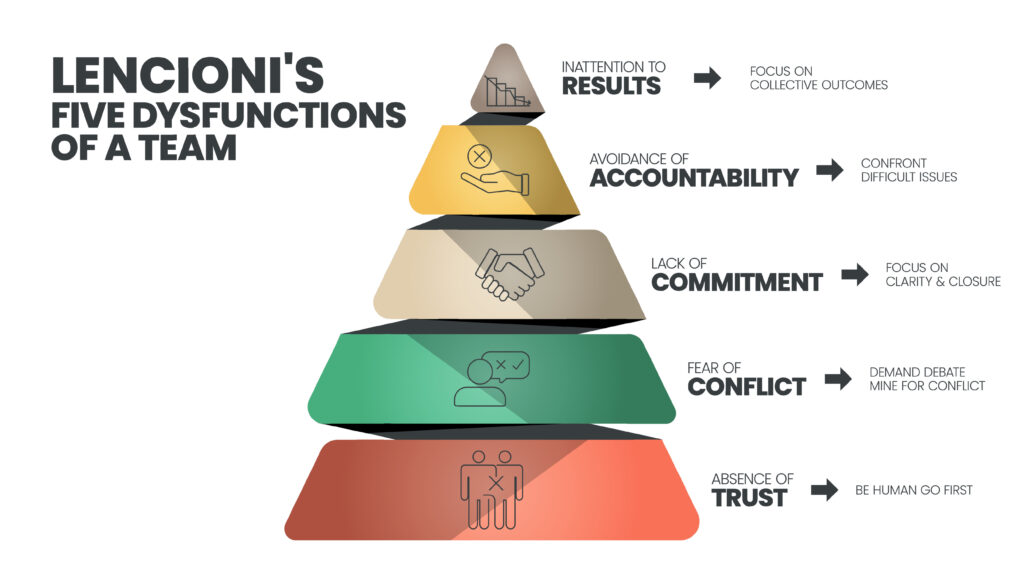info@teamchallenge-company.co.uk
03300 04 09 03
When a team isn’t performing well, it’s rarely about a lack of skill. From my experience over the past twenty years, the issues often lie in how people interact and collaborate day-to-day.
We’re continuing our focus on team building models with Lencioni’s ‘Five Dysfunctions of a Team’.
Lencioni’s model doesn’t just identify what’s going wrong. It shows how each behaviour affects the next, gradually weakening how a team functions. The issues often build quietly, which makes them easy to miss. For any team looking to grow or improve how they work together, it offers a simple and useful place to start.

The Five Dysfunctions of a Team according to Lencioni are:
This isn’t about whether people get on socially. It’s about whether they feel safe enough to be open, admit mistakes, ask questions or say ‘I need help.’ Without trust, everything else suffers.
Lack of trust often leads to a fear of conflict. People stop challenging ideas or giving honest feedback. You end up in meetings where everyone nods, even though half the room disagrees. It keeps things smooth on the surface, but problems bubble underneath.
When people feel like they’re not being heard, they won’t fully support the decisions being made. They might go along with things to a certain point but will hold back when it comes to taking action. This creates hesitation and lowers motivation. People feel unsure about what they are working towards or how the team has reached its decisions. That uncertainty then makes it harder for the team to stay focused or hold each other to account.
Which brings us to the fourth dysfunction: avoidance of accountability. Without clear commitment, team members are less likely to challenge one another or flag issues early. That can lead to lowered standards and missed deadlines.
At the top of Lencioni’s model is inattention to results. This is where individual goals and personal success start to take priority over what the team is trying to achieve together. People focus on their own tasks, recognition or position, rather than the group’s shared outcomes. Collaboration starts to drop off and progress begins to stall, but it’s not always obvious why. Everyone appears to be working hard, but the team’s goals still feel distant and difficult to measure. Without a clear focus on collective success, it becomes harder to stay on track or measure what progress really looks like.
We often see Lencioni’s theories come to life during team building sessions. The behaviours he describes don’t just show up in meetings, they can appear in how teams communicate, how they listen and how they respond under pressure in any environment.
The right team building experience can create a space where people start to open up, listen differently and notice how they work as a group. These moments build trust and make it easier for honest conversations to happen. If you’re interested in exploring how this might support your team, feel free to get in touch with us.